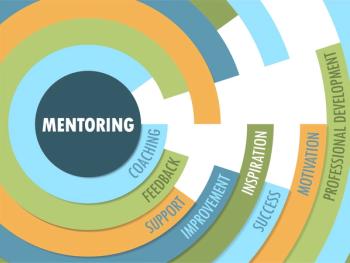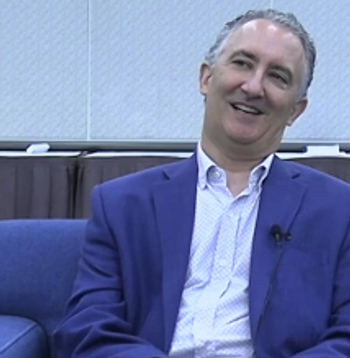
- Vol 32 No 9
- Volume 32
- Issue 9
Separating the Wheat From the Chaff
Don't miss the June 28th issue of the New York Times magazine with a special series on psychiatric issues that illustrate for general readers some of the most important - and exciting - advances in our field.
[[{"type":"media","view_mode":"media_crop","fid":"41204","attributes":{"alt":"© Crystal Eye Studio/shutterstock.com","class":"media-image media-image-right","id":"media_crop_4845568830063","media_crop_h":"0","media_crop_image_style":"-1","media_crop_instance":"4314","media_crop_rotate":"0","media_crop_scale_h":"105","media_crop_scale_w":"150","media_crop_w":"0","media_crop_x":"0","media_crop_y":"0","style":"float: right;","title":" ","typeof":"foaf:Image"}}]]From the Editor
We’re usually so busy trying to keep up with all the advances in our field and our own professional education needs that it’s hard to know what kind of information, other than the most egregious examples, the general public is receiving about psychiatry. This summer, in the June 28th health issue of the New York Times Magazine, there was a lengthy series of articles on psychiatric issues that illustrated for a general readership some of the most important and exciting advances. In addition to personal reminiscences from several prominent writers, the articles give a snapshot of both state-of-the-art scientific advances and personal experiences with treatment, and how our understanding of mental processes can be applied in ways that might seem unusual but may turn out to be very important.
Since the 1993 Time magazine cover that asked, “Is Freud Dead?”1 the public has been inundated with articles both proclaiming the lack of validity of Freud’s theories about mental development and the uselessness of psychoanalysis and related psychodynamic psychotherapies (and by extension all psychotherapies) for treatment. It was refreshing, therefore, to see the positive approach taken in the New York Times article “Tell It About Your Mother: Can Brain-Scanning Save Freudian Psychoanalysis.”2 This article presented, in an easily understandable way, how modern neuroscience research is providing support not only for some of Freud’s basic theories about mental functioning but also for how positive clinical improvement can be correlated with identifiable changes in brain functioning.
Of course, psychiatrists know that researchers have been working to illuminate these matters for over 4 decades. As long ago as the early 1980s, Eric Kandel, the Nobel prize–winning psychiatrist, was asserting that if psychotherapy works, it produces changes in brain micro-anatomical organization and functioning. He said that someday our ability to observe the brain’s functioning would be good enough to see evidence of those changes.
Psychiatrists know that day came over a decade ago, but these findings are little known to the public. This lack of awareness has made it easier for those who wish to disparage psychotherapeutic treatment or fail to support reimbursement for psychotherapy. Political discussions about climate change and old commercials about “better living through chemistry” notwithstanding, most Americans have a healthy regard for science and are able to understand scientific advances and to see how those advances can translate into better health. As both a psychoanalyst and a cognitive neuroscience researcher, I was glad to see a sophisticated and easily understandable article on psychoanalysis and the neuroscientific research that supports it.
On the other end of the spectrum, a very balanced presentation about the benefits and risks of one of the most dramatic pharmacotherapeutic advances in modern psychiatry-the FDA approval of lithium carbonate to treat bipolar illness-was found in “I Don’t Believe in God But I Believe in Lithium.”3 (I still remember exactly where I was in 1970-in my medical school’s preclinical study room-when I first heard about the FDA approval of lithium and its “almost magical” impact on the disease’s symptoms.)
Too often, the public media is filled with sensationalistic antipharmaceutical and antipsychiatry stories about the dangers and abuses of psychotropic medications. The primary aim of these stories has been not to educate but to frighten. The impact has been to increase stigma about psychiatric treatments and to induce even more hesitancy than would ordinarily exist in seeking treatment by those in need. The New York Times story, on the other hand, is a first-person account of the amazing beneficial effect of lithium on bipolar disorder as well as an appropriately cautionary discussion of the risks. My kudos and thanks go to the author, whose courage and thoughtfulness provided a report useful to patients with bipolar disorder, their families, and the general public as well as being supported by many in the psychiatric community.
You’d have to have been incommunicado for the past several years to be unaware of all the news reports about the increasingly important study of the role of our own micro-biome, especially our gut bacterial flora, in illness and health. The latest wave of interest has been the role of our intestinal flora in problems such obesity and autoimmune disorders such as Crohn disease and lupus.
Not many psychiatrists and essentially none of the public have been aware, though, of the decades-long research into the role of gut flora in psychiatric conditions such as depression and anxiety. That history is briefly reviewed in “Can the Bacteria in Your Gut Explain Your Mood?.”5 Every medical student and psychiatric resident is taught that most of the body’s serotonin comes from the gut, but it is rarely taught that some strains of gut bacteria secrete neurotransmitters such as dopamine and other likely psychoactive peptides.
Not only is the research itself fascinating to read about, but it also illustrates how psychiatric research now encompasses such a diverse array of scientific avenues of study that even microbiology is an increasingly important area. When I was a residency director, I wanted my residents to learn about psychoneuroimmunology-the importance and interaction of the brain and the endocrine and immune systems-in order to understand brain function vs mental functioning. I wish I had been prescient enough to see, as have been the researchers cited in this article, of the importance of microbiology as well. Those who claim that one doesn’t need to be a physician to best understand and treat psychiatric disorders might be given pause when they read this article.
The final New York Times article I’d like to mention is “The Town Shrink,”6 which highlights Columbia University psychiatrist Mindy Fullilove’s work in combining insights from social psychology, sociology, public health, and urban planning to improve the cohesion and mental health of communities. It has been accepted wisdom for decades that the architectural design of a building’s interior space affects a person’s mental state. Such insights have served to modify and, one hopes, improve the work environments for hundreds of thousands of American workers. What makes Fullilove’s work so intriguing and potentially valuable on a larger scale is that she has applied similar principles to how urban areas can be redesigned and rebuilt both physically and functionally to create a new environment. Such an environment, Fullilove believes, can foster the sense of community than has a salubrious effect on inner and interpersonal mental life. Some psychiatrists put their patients on the couch, but Fullilove, to quote the Times, “now puts entire cities on the couch.”
After reading these articles I found myself wishing that much more of our own professional organizations’ efforts would go to collaborating with media to help them provide balanced and non-partisan public education about the advances in research and clinical understanding and intervention. The American Psychiatric Association comes to mind as the organization with the most resources for this kind of ongoing initiative. Maybe those of us who are members can lobby to expand the public education portfolio.
References:
1. Is Freud Dead? Time. November 29, 1993.
2. Schwartz C. Tell it about your mother. New York Times. June 24, 2015.
3. Lowe J. I don’t believe in God but I believe in lithium. New York Times. June 24, 2015.
4. Smith PA. Can the bacteria in your gut explain your mood? New York Times. June 24, 2015.
5. Sullivan R. The town shrink. New York Times. June 24, 2015.
Articles in this issue
about 10 years ago
A Review of Changes in DSM-5 Sleep-Wake Disordersabout 10 years ago
Sleep-Related Violenceabout 10 years ago
Parasomnias: What Psychiatrists Need to Knowabout 10 years ago
The Correlation Between Sleep Disturbance and Suicideabout 10 years ago
Sleep Disturbances After Traumatic Brain Injuryabout 10 years ago
Koryagin, Suspicious of Glasnost, Recounts Ongoing Soviet Abusesabout 10 years ago
PTSD in DSM-5: Understanding the Changesabout 10 years ago
Weight Loss Associated With Cholinesterase Inhibitors in the ElderlyNewsletter
Receive trusted psychiatric news, expert analysis, and clinical insights — subscribe today to support your practice and your patients.














